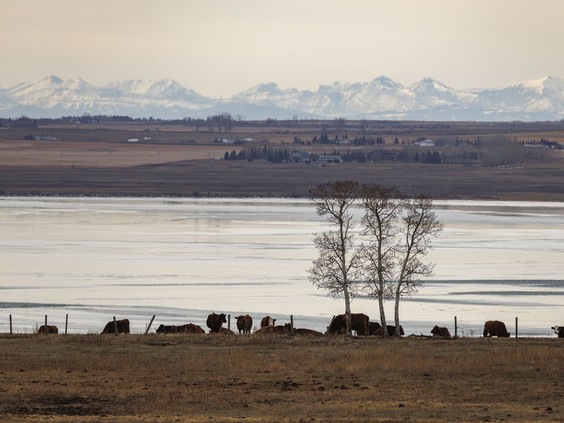Politics
Alberta Health Services Warns of Cyanobacteria at Eagle Lake

Alberta Health Services (AHS) has issued a no-contact advisory for Eagle Lake, located approximately eight kilometres southeast of Strathmore, due to dangerous levels of cyanobacteria. This advisory, announced in March 2024, advises the public against swimming, wading, or any contact with the water where cyanobacterial blooms are visible.
Cyanobacteria, often referred to as blue-green algae, is a naturally occurring organism that can become problematic under certain weather conditions. It typically appears as a scum-like substance on the water’s surface and can vary in color, including shades of blue-green, greenish-brown, brown, and even pinkish-red. The blooms may emit a musty or grassy odor, further indicating their presence.
Visitors to Eagle Lake are strongly urged to avoid any contact with the affected waters. AHS advises that if contact does occur, individuals should wash with tap water immediately. Additionally, pet owners are cautioned against allowing their animals to swim in or ingest water from the lake, as exposure to cyanobacteria can be fatal to pets.
According to AHS, “Consider limiting human consumption of whole fish and fish trimmings from this lake, as it is known that fish may store toxins in their liver.” However, the organization clarified that consuming fish fillets from Eagle Lake is safe.
AHS emphasizes the importance of never drinking or cooking with untreated water from recreational bodies of water, including Eagle Lake. Boiling this water will not eliminate the toxins produced by cyanobacteria. The advisory also extends to providing alternative drinking water sources for pets and livestock during this period.
Symptoms related to cyanobacteria exposure can manifest quickly, typically within one to three hours. Individuals may experience skin irritation, rashes, sore throats, red eyes, swollen lips, fever, nausea, vomiting, or diarrhea. AHS notes that symptoms can be more pronounced in children, but all individuals are at risk.
The organization also highlighted that weather and wind conditions can influence the movement of algae blooms, and as such, the advisory will remain in effect until further notice. While recreational activities are discouraged in visibly contaminated areas, parts of Eagle Lake without visible blooms may still be used.
For those concerned about potential cyanobacteria exposure or seeking additional information on health impacts, AHS encourages contacting Health Link at 811. More resources are also available online at ahs.ca/bga.
As the situation develops, AHS remains vigilant in monitoring the health of Eagle Lake and the safety of its visitors.
-

 Politics4 weeks ago
Politics4 weeks agoSecwepemc First Nation Seeks Aboriginal Title Over Kamloops Area
-

 World5 months ago
World5 months agoScientists Unearth Ancient Antarctic Ice to Unlock Climate Secrets
-

 Entertainment5 months ago
Entertainment5 months agoTrump and McCormick to Announce $70 Billion Energy Investments
-

 Science5 months ago
Science5 months agoFour Astronauts Return to Earth After International Space Station Mission
-

 Lifestyle5 months ago
Lifestyle5 months agoTransLink Launches Food Truck Program to Boost Revenue in Vancouver
-

 Technology3 months ago
Technology3 months agoApple Notes Enhances Functionality with Markdown Support in macOS 26
-

 Lifestyle3 months ago
Lifestyle3 months agoManitoba’s Burger Champion Shines Again Amid Dining Innovations
-

 Top Stories2 months ago
Top Stories2 months agoUrgent Update: Fatal Crash on Highway 99 Claims Life of Pitt Meadows Man
-

 Politics4 months ago
Politics4 months agoUkrainian Tennis Star Elina Svitolina Faces Death Threats Online
-

 Sports5 months ago
Sports5 months agoSearch Underway for Missing Hunter Amid Hokkaido Bear Emergency
-

 Politics5 months ago
Politics5 months agoCarney Engages First Nations Leaders at Development Law Summit
-

 Technology5 months ago
Technology5 months agoFrosthaven Launches Early Access on July 31, 2025





















